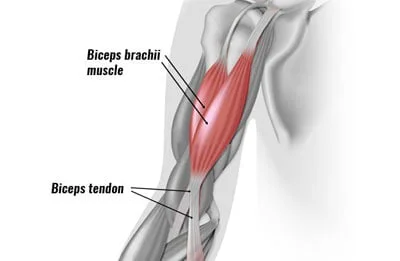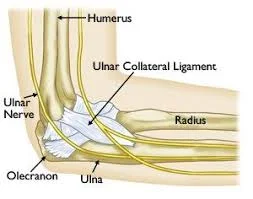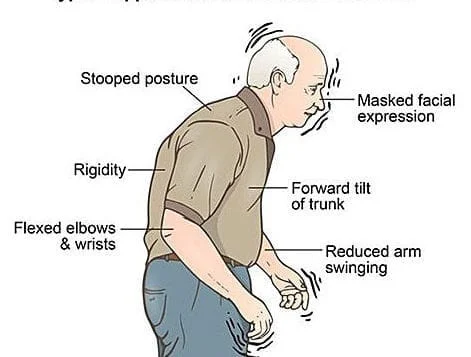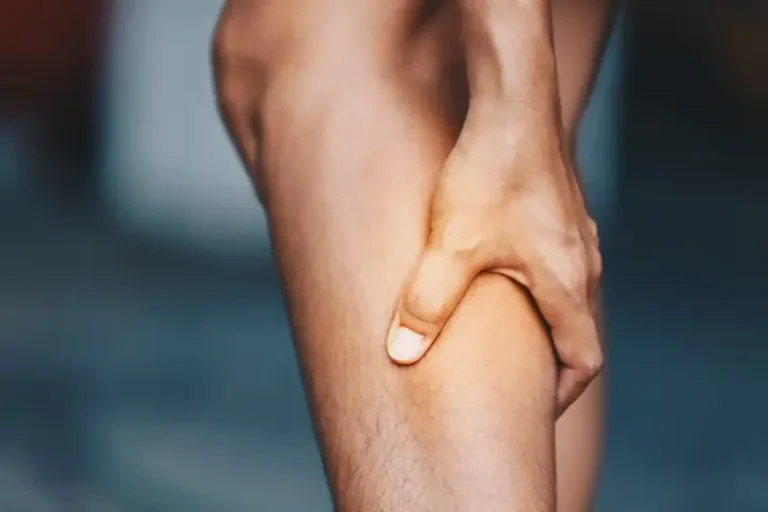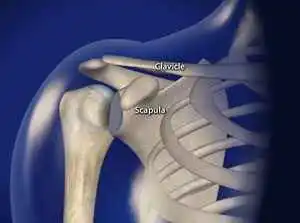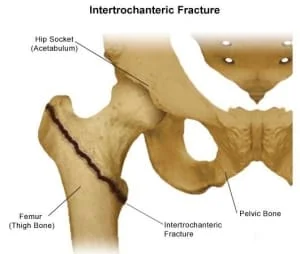Bicipital Tendonitis
Bicipital Tendonitis: What is it?
Bicipital Tendonitis is caused by inflammation in the tendon of the upper biceps. This tendon, sometimes called the long head of the biceps tendon, joins the shoulder blade bone to the biceps muscle. Your elbow may also develop the problem.
This overuse injury, also known as tendinitis, is frequently caused by repeated overhead motions. For example, professional baseball players, swimmers, tennis players, and golfers are susceptible to elbow, shoulder, and arm tendonitis. A sudden, significant stress on the tendon might also result in tendinitis.
Biceps tendinitis is typically not a single occurrence. Usually, it associated with other shoulder issues like:
- Arthritis in the shoulders.
- Shoulder dislocation.
- Shoulder impingement.
Anatomy of Biceps Muscle:
The big, thick muscle on the front of the upper arm is called the biceps brachii, or simply the biceps.
Its two heads—the long head and the short head—cooperate to supinate the forearm and flex the elbow.
Origin:
Long head: The scapula’s supraglenoid tubercle
Short head: The scapula’s coracoid process
Insertion:
The radius’ radial tuberosity
Innervation:
Musculocutaneous nerve innervation
Functions:
Elbow flexion
Forearm supination
Insufficient shoulder flexion
A strong muscle, the biceps brachii is essential for various daily tasks, including lifting, carrying, and throwing. It also participates in sports including baseball, tennis, and weightlifting.
Types of Bicipital Tendonitis:
The biceps tendon links the muscle to the shoulders and elbows.
Two tendons link the biceps muscle to the shoulder. One of these is the long head, which attaches to the top of the shoulder socket, or glenoid.
The other one is the short head, which joins it to the coracoid process, or the front of the shoulder blade.
The type of Bicipital Tendonitis a person suffers is determined by which tendon has been affected:
The term distal Bicipital Tendonitis refers to inflammation close to the end of the tendon that joins the biceps muscle to the elbow.
Inflammation near the end of the tendon that connects the biceps muscle to the shoulder is known as proximal Bicipital Tendonitis.
Instead of having tendinitis in both areas at once, a person will often just have one kind.
Causes of Bicipital Tendonitis:
Inflammation of the biceps tendons results in Bicipital Tendonitis. Microscopic tears may occasionally be the cause of this.
Bicipital Tendonitis can be caused by:
- General wear and tear
- excessive strain on a tendon from a repeated action
- poor posture
- heavy lifting
- poor technique while playing sports
- injury
- shoulder impingement
Signs and Symptoms of Bicipital Tendonitis:
Bicipital Tendonitis symptoms might include:
- Discomfort that gets worse when moving the joint, which might result in limited mobility.
- weakening of the muscles
- discomfort that gets worse while moving upward, especially a clicking, grating, or cracking sound as the shoulder moves, localized swelling that frequently co-occurs with fever or a change in skin tone, and trouble twisting the arm
What are the Risk factors for Bicipital Tendonitis?
Bicipital Tendonitis can occur due to several risk factors, such as:
- Age.
- Frequent overhead movements in your day-to-day tasks.
- Engaging in physical activities, such as sports.
- Arthritis.
- Smoking.
Which Side effects are possible with Bicipital Tendonitis?
Biceps tears are among the issues that can result from severely overusing your biceps tendons.
Tears in the biceps tendon
When a tendon is destroyed from prolonged or heavy usage, it can cause a biceps tear. Injuries such as awkwardly bending or twisting your elbow or shoulder or falling with your arm extended can potentially cause a tendon to rip. The most common cause of bicep tendon rips near the elbow is moving a big object, such as a refrigerator or couch.
Either the elbow or the shoulder may sustain a bicep tendon injury. Additionally, a tear may be partial or full (rupture of the biceps tendon). A ruptured biceps tendon indicates that the tendon has been ripped off the bone.
Tears in the distal biceps tendon
Only one tendon connects the biceps muscle to the elbow, while two tendons connect it to the shoulder bone. We refer to this as the distal biceps tendon.
Distal biceps tendon tears are uncommon and typically occur after lifting a big object or following an accident. However, the muscle separates from the bone and retracts back when this tendon breaks and the rupture is typically complete. This results in weakness while doing strong palm-up tasks, such as using the right hand to tighten a screwdriver.
The Diagnosis of Bicipital Tendonitis:
A medical practitioner can diagnose Bicipital Tendonitis using several tests, such as:
Physical assessment
A physician can diagnose Bicipital tendonitis by reviewing a patient’s medical history and talking about their symptoms.
They can ask someone to show the affected arm’s maximum range of motion and contrast it with the other arm.
Examinations
The following tests can be used to diagnose Bicipital tendonitis:
MRI scans: This kind of scan allows medical professionals to evaluate the damage by revealing any tendon rips.
Although soft tissues like tendons cannot be seen on X-rays, they can be used to rule out other possible explanations for a patient’s symptoms.
Therapy:
Different treatment approaches can be required depending on how severe the Bicipital Tendonitis is.
Non-surgical choices:
Home treatments may be effective for mild cases of Bicipital Tendonitis.
The AAOS advises someone to first try:
- Rest: Give the tendon time to recover by avoiding the action that caused the discomfort.
- Ice: For 20 minutes, apply ice packs to the affected region. Four to eight times a day.
- Over-the-counter medication: Ibuprofen and naproxen are examples of nonsteroidal anti-inflammatory medicines that may help reduce the discomfort and swelling associated with bicep tendonitis. Both oral and topical medications are available, which are applied directly to the skin as creams, gels, or patches.
- Physical therapy: A person may be able to restore their arm and shoulder strength and range of motion by performing certain stretches and strengthening exercises. To prevent the injury from getting worse, it’s crucial to only perform stretches and exercises that have been authorized by a healthcare provider. Gentle massage can promote healing by reducing inflammation and repairing soft tissue damage, while ultrasound therapy can assist relieve pressure on the tendons. By promoting appropriate hand and elbow movement and lowering muscle stress, kinesiology tapes can lessen the severity and pain of bicep tendon strains.
- Injections of steroids: In certain situations, a physician may administer steroids straight into the tendon. In rare cases, this might worsen the condition by further weakening the tendon, even while it helps reduce discomfort and inflammation.
When the symptoms subside, it’s crucial to use the arm as normally as possible, unless a medical practitioner instructs you otherwise, to prevent further weakening.
Bicipital Tendonitis Exercises:
Biceps Curls
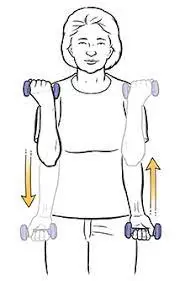
- Don’t overdo it here! Your goal is not to develop massive biceps, but to carefully heal your tendon.
- To begin biceps curls, stand up and pick up a small weight, like a dumbbell or tin can. With your palm facing forward, let your arm fall to your side.
- Lift the weight at your elbow while maintaining a straight upper arm.
- Lower your arm back down slowly. After completing this ten times, repeat the set three times, taking a break in between.
Biceps Stretch
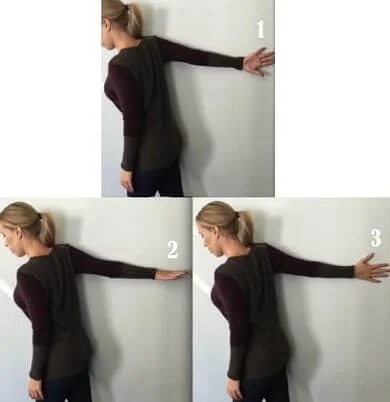
- One of the finest stretches for bicep tendonitis is this one since you can adjust the intensity to avoid overstretching.
- To begin a biceps stretch, stand with your back to a wall and about 6 inches from it. To align your hand with your shoulder, raise your arm to the side.
- Your palms should be facing down as you move your hand slightly forward until your thumb touches the wall.
- Hold that arm in place while you turn your head away from the lifted hand until your biceps start to stretch.
Pendular motions:
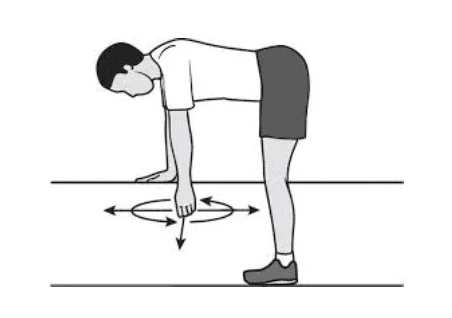
- At your waist, bend.
- Your arm should lean down.
- Sway gently in an anticlockwise or clockwise motion.
- Do this for five minutes each hour. There will be a noticeable change.
Shoulder Flexion:
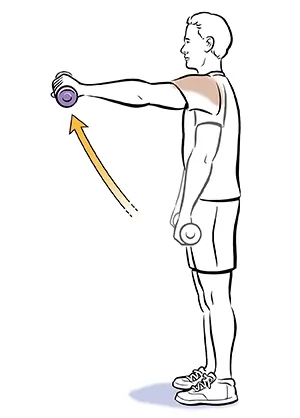
Position your arm at your side, palm facing your thigh, to demonstrate shoulder flexion. Maintaining a straight elbow, slowly raise your arm straight up in front of you until it is overhead. After five seconds of holding, carefully bring your arm back down. Ten to fifteen times, two to three times a day.
Shoulder Internal Rotation:
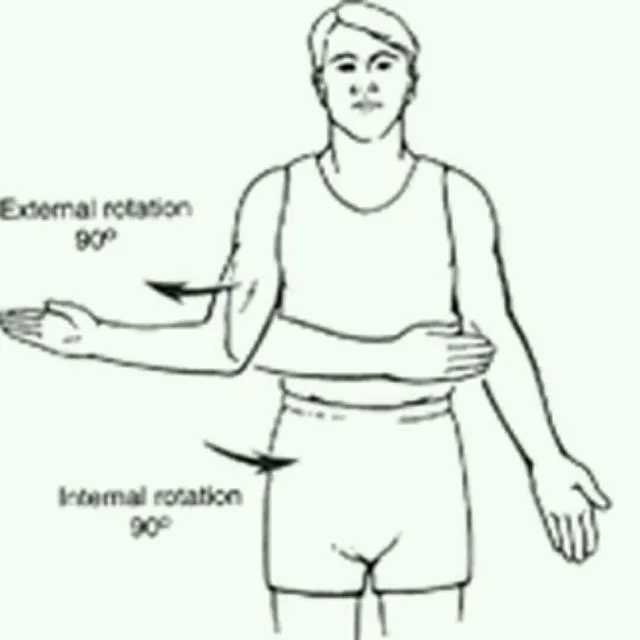
Maintain a 90-degree elbow bend while standing with your arm at your side to perform shoulder internal rotation. In your palm, hold a light resistance band. Rotate your arm inward towards your body while keeping your elbow close to your side. After five seconds of holding, carefully move back to the beginning position. Ten to fifteen times, two to three times a day.
External Rotation of the Shoulders:
Place your arm at your side and bend your elbow to a 90-degree angle. In your palm, hold a light resistance band. Rotate your arm outward and away from your body while keeping your elbow near your side. Return to the starting position gradually after holding for five seconds. Ten to fifteen times, two to three times a day.
Wrist curls:
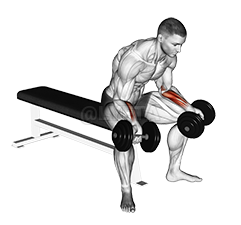
Place a small dumbbell palm up in your hand. With your wrist hanging over the side, place your forearm on a table or your thigh. Raise the weight by slowly curling your wrist upwards. Reduce the weight gradually. Ten to fifteen times, two to three times a day.
Avoid these exercises if you have Bicipital Tendonitis:
Exercises that require you to raise your arms high or in front of you should be avoided while you heal. Squeezing the biceps tendon might exacerbate the pain.
When dealing with Bicipital Tendonitis, avoid the following exercises:
Lifting Overhead
- Don’t raise anything with your arm bent more than 90 degrees. Your biceps tendon will be overstretched as a result, which will make the pain worse.
- Bicep curls are one exercise that might be highly beneficial for shoulder rehabilitation. To assist build your muscles without overtaxing your tendons, try these instead.
Overhead shoulder presses
- According to studies, most men lack the shoulder mobility necessary to perform proper behind-the-neck shoulder pushes.
- This is why doing this workout if you have biceps tendinitis is not a smart idea.
Shoulder Shrugs
- The shoulder shrug entails raising your shoulders. Your wounded biceps tendon is directly compressed by this, which exacerbates the agony.
- Shoulder shrugs should be avoided if you have bicep tendinitis.
Push-ups
- Push-ups increase discomfort and inflammation because they require you to lift your body weight with your arms.
- Even if you feel like you’re getting better, we advise beginning with mild wall pushups and only doing pushups off your knees when you’re sure it won’t hurt.
Lifting Heavy Weights
- Your biceps tendon is under a lot of stress from heavy lifting, which might make pre-existing symptoms more likely.
- Ask for assistance with heavy lifting tasks until you feel completely recovered!
Surgery of Bicipital Tendonitis:
Your doctor could recommend surgery if non-invasive treatments don’t help you feel better. The operation will probably be done arthroscopically by your provider. To guide the process using tiny surgical tools, they will introduce an arthroscope, a tiny camera, into your shoulder joint to obtain photographs.
Among the surgical possibilities are:
- Biceps tenodesis. The injured portion of your bicep will be removed by your surgeon, and the remaining tendon will be reattached to the humerus, the upper arm bone.
- Tenotomy. Your surgeon will extricate your damaged biceps tendon from its source.
How much time does it take to recover from Bicipital Tendonitis?
The severity of your injury and the course of therapy will determine how long it takes to recover from Bicipital Tendonitis. Your problem should improve in a few weeks with noninvasive therapy.
You will need more time to heal if you undergo surgery. Your doctor could recommend wearing a sling for one to four weeks, depending on the treatment.
Additionally, you will require physical therapy or another form of rehabilitation. A complete recovery might take three to four months.
Is it possible to avoid Bicipital Tendonitis?
Since the majority of tendonitis instances are caused by overuse, prevention is the best course of action. Avoiding or altering the actions that are the source of the issue is crucial. When engaging in physical activity:
- Start slowly and increase your level of exercise gradually.
- Limit how many repetitions you perform and how much force you apply.
- If you experience any unexpected pain, stop.
- In athletics or at business, take care to avoid and then rectify bad posture or technique.
Recovery time of Bicipital Tendonitis:
After one to two weeks, mild tendinitis that may be treated at home may go away. The healing period will be longer, though, if surgery is necessary.
For more precise information on the healing period, people should discuss their particular instance of tendinitis with a healthcare provider.
People run the danger of further injuring their bicep tendons if they attempt to resume their regular activities too soon, which might exacerbate their symptoms.
Summary
When the tendon in the biceps muscle expands and gets inflamed, it can lead to bicep tendonitis. Even while it may be a normal part of growing older, it can still hurt and need to be treated.
Bicep tendonitis can progress to partial or complete rips of the tendons if the affected individual does not let the armrest. Surgery may then be necessary as a result.
With the right medical care, a person should heal quickly and be able to use their arm freely again.
FAQs
How is bicipital tendonitis treated?
Physical Therapy
Reducing edema and inflammation are the primary objectives of the acute phase of therapy for bicipital tendonitis. Patients should limit lifting, reaching, and over-the-shoulder motions. For the first 48 hours, patients should apply ice to the affected region two to three times a day for ten to fifteen minutes each time.
What causes tendinitis in the bicipital region?
Impingement or an isolated inflammatory injury can cause disorders of the biceps tendon. Compensation for intra-articular pathology, labral tears, and rotator cuff abnormalities takes precedence over other causes.
Does tendinitis in the biceps go away?
It’s not necessary to put up with biceps soreness. In 75% of instances, tendinitis can be resolved with physical therapy and other non-surgical measures.
What is the duration of tendinitis?
Although discomfort can linger longer, tendinitis often only lasts a few days. It’s crucial to give your aching tendon some rest.
How can someone who has Bicipital Tendonitis sleep?
Sleeping on your front or side can exacerbate your shoulder discomfort since bicep tendinitis creates pain and soreness at the top of your arm. Using the sleeping positions listed above, it is recommended that people with bicep tendonitis sleep on their back or on the side that is not affected.
Is it OK to massage Bicipital Tendonitis?
Indeed, massage can assist with Bicipital Tendonitis because it promotes healing, eases muscular tension, and increases blood circulation. To prevent making the symptoms worse, it should only be carried out by a medical professional who is knowledgeable about the illness.
References
- Bicep tendonitis. (2025, January 24). Cleveland Clinic. https://my.clevelandclinic.org/health/diseases/bicep-tendonitis
- Ames, H. (2021, April 29). What to know about bicep tendonitis. https://www.medicalnewstoday.com/articles/bicep-tendonitis#summary
- Best 7 Bicep Tendonitis Exercises, with Examples | Dr. Mehta. (2024, August 18). Resilience Orthopedics. https://www.resilienceorthopedics.com/shoulder/bicep-tendonitis-exercises/

